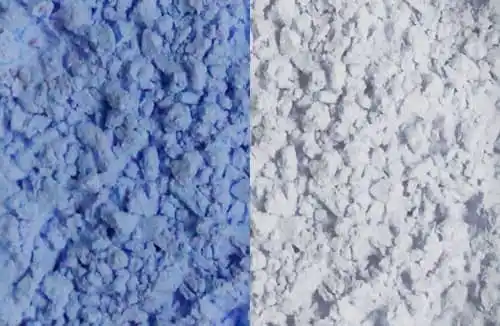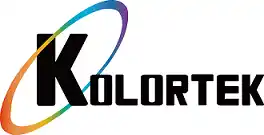The Principle and Structure of Thermochromic Pigments
September 20th, 2024Thermochromic powder, also referred to as thermochromic pigment or temperature-sensitive powder, is a special pigment composed of electron-transfer organic compound systems. The unique molecular structure allows it to undergo electron transfer at specific temperatures and thus change color through molecular rearrangement – an invaluable property which makes thermochromic powder an excellent color-changing material suitable for transitions between colored and colorless states.
As opposed to heavy metal complex salts or liquid crystal-based thermochromic materials, thermochromic powder offers many distinct advantages over its traditional heavy metal complex salts or liquid crystal-based thermochromic materials in terms of vivid colors, transition from colored states back into their non-colored states, environmental friendliness and responsiveness to color change compared to its counterparts. While heavy metal complex salts and liquid crystal-based thermochromic materials also exhibit color-changing effects, thermochromic powder often surpasses these in vividness, vividness environmental friendliness and responsiveness when it comes to color changing effects due to their vividness, vividness, vividness, environmental friendliness and responsiveness compared with thermochromic powders compared with its counterparts when it comes to vividness vividness vividness, environmental friendliness and responsiveness to color change sensitivity when compared with thermochromic powders.

Microencapsulation Technology and Its Benefits
One of the key technologies of thermochromic powder is microencapsulation, also known as reversible thermochromic pigment powder. Microencapsulation involves enclosing thermochromic material within an insoluble and resistant to melting transparent shell from 0.2 to 0.5 microns thickness to provide ample protection for its use in application and to extend its lifespan while protecting from external chemicals which might adversely affect it during its lifespan.
Microcapsules range in diameter from two to seven microns (1 micron is one thousandth of a millimeter), and these particles respond quickly and distinctly to temperature changes, showing noticeable color shifts. Their protective outer shell allows thermochromic powder to be used safely in many different environments without fear of its stability being compromised; once damaged however, exposure of its thermochromic substance to external environments could result in failure or decreased performance.
Basic Properties of Thermochromic Pigment
Thermochromic powder comes in many different colors, such as red, yellow, blue, green and purple. Each hue can be customized to meet specific application needs and will change when exposed to different temperatures – typically 16degC to 45degC with common specific temperatures being 16degC, 17degC 18degC 22degC 30degC 31degC 32degC 43degC 45degC etc. Additionally different color/temperature ranges can meet specific application demands, such as displaying one color in cooler environments before switching colorless or another hue as temperature rises – perfect for various applications that involve changing with changing environments displaying one color then switching when temperatures shift or rising up or vice versa!
Red thermochromic powder designed to change color at 31degC will remain red below that temperature, but when its temperature goes beyond that mark it will turn colorless – although this transition is reversible – once temperature returns down again the original hue will return, helping thermochromic powder maintain its color-changing ability in repeated temperature cycles.
Technical Features of Temperature-Sensitive Powder
Microencapsulated particles found within thermochromic powder not only enable color change, but they also feature heat resistance and oxidation resistance properties that allow thermochromic powder to maintain its physical and chemical properties even under intensely hot environments without degrading due to oxidation or thermal exposure – qualities which make thermochromic powder highly applicable in demanding industrial sectors such as automotive coatings or exterior coats for electronic devices.
Microencapsulation offers unparalleled control. By altering parameters such as microcapsule thickness and particle size, manufacturers can precisely manage temperature at which color changes occur and vividness of colors displayed by thermochromic powder – making this versatile product ideal for industrial and commercial needs alike.
Applications and Design Characteristics
Thermochromic powder has become an integral component of temperature-sensing product designs, especially products that come into direct contact with human bodies, like temperature-sensitive cups and thermochromic clothing textile. These products allow users to directly perceive temperature changes through tactile interaction – for instance some temperature-sensitive cups change color as hot water is added, enabling intuitive sense of water’s temperature.
thermochromic powder can also be incorporated into anti-counterfeiting designs thanks to its hard-to-replicate color changing capabilities, providing products with robust security features such as luxury goods or security documents with an enhanced technological value and boosting consumer trust. Color shifting can serve as an indicator that shows authenticity of products while adding an element of visual security for consumers.
As technology develops, thermochromic powder’s applications continue to expand. Beyond temperature-sensitive consumer goods and anti-counterfeiting measures, thermochromic powder has also found use in display materials, electronic paper, and smart packaging – providing innovative color changing solutions for emerging technologies.
Thermochromic pigment, as a special type of functional material, have found wide application in multiple sectors due to their unique color-changing principle and microencapsulation technology. From everyday consumer goods to advanced technological applications, its potential and value have become increasingly evident; from everyday consumer products to advanced technological applications. As technology progresses further, thermochromic powder is expected to continue showing off its special qualities across even more industries.
